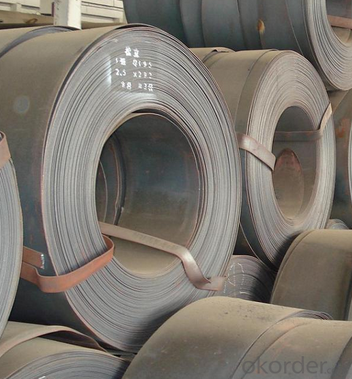Quick Details
Standard: DIN
Grade: HX160YD/HX180/BD/HX300LAD
Type: Steel Coil
Surface Treatment: Galvanized
Application: High proof strength for cold forming
Width: 600-1534mm
Length: Coil
OKorder Service Pledge
OKorder Financial Service
You Might Also Like
Standard: DIN
Grade: HX160YD/HX180/BD/HX300LAD
Type: Steel Coil
Surface Treatment: Galvanized
Application: High proof strength for cold forming
Width: 600-1534mm
Length: Coil
| Packaging Details: | Oscillated wound: one coil per bundle, inner is the protecting humidity-proof wax paper. Medium is plastic film. Outer is sackcloth or compound paper packing. Coil to be laid on single type pallet (one pile per pallet) |
|---|---|
| Delivery Detail: | Depends on specification and order quanity. |
(1) Type of zinc coating finish: regular spangle, minimized spangle and skin-pass.
(2) Types of surface qualities: as coated surface, improved surface and best quality surface.
(3) Surface treatment: chemically passivated, chromate-free passivation, phosphate, anti-finger print, phosphateand, self lubricating film, and untreated.
(4) Type of oiling: oiled and unoiled.
(5) Coil ID: 508/610mm.
(6) Grade: HX160YD/HX180/BD/HX300LAD; Application: high proof strength for cold forming.
Width : 600mm-1250mm
Thickness : 0.15mm-1.0mm
Length : as required
Coil weight : 3-15 tons as required
Coil id : 508mm
Zinc coated : 50g-220g/m2
Surface : regular spangles , big spangles , mini spangles , zero spangles , skin passed , chromed , oiled , unoiled , anti-finger print
Standard : AISI , ASTM , BS , DIN , GB , JIS
Material : SGCD , SGCH , Q195 , DX51D
Grade : prime
MOQ : 25 tons on one color
Port : TIANJIN , QINGDAO , SHANGHAI
Payment : T/T or L/C
Capacity : 100,00 tons per year
Delivery time : 15-35 days after recieve the down payment or L/C
Packing : normal sea worthy package
7 years experience of manufacturer and export
Had pass the ISO 9001 : 2000
What is the application of Steel Coil?
There are two sides,one is out side: Workshop, agricultural warehouse, residential precast unit, corrugated roof, roller shutter door, rainwater drainage pipe, retailer booth;the other is inside: Door, doorcase, light steel roof structure, folding screen, elevator, stairway, vent gutter.

Send your message to us
OKorder Service Pledge
OKorder Financial Service
Similar products
Hot products
Hot Searches
Related keywords